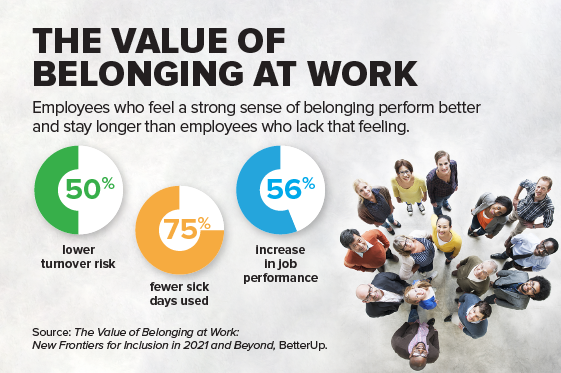Every practice has that one person who steps up and helps out (without being asked), enjoys learning, and boosts the morale of the whole team. Chances are it is one of your hygienists. The best RDHs to employ are those who go the extra mile; but if you don’t acknowledge their extra effort, they will move on to a setting that does.
There is a shift happening in dental hygiene, and if we aren’t prepared for it, we are going to fall so far behind that it will be challenging to catch up. As RDHs shift their mindset to oral-systemic wellness over dental health alone, they need deeper oral-systemic training than they had in school. Patient-centered care requires new protocols to emerge, and the workforce that develops them needs to be developed themselves.
As the shift continues, the hygienists that remain have higher levels of ownership over their career choices and are prepared to hand disease ownership back to their patients. Today’s RDH wants to guide their patients toward overall health with personal information that empowers and educates. The hygienist of the future is an oral-systemic and behavioral change coach. They work smarter, not harder.
“Great leaders create more leaders, not followers. Great leaders have vision, share vision, and inspire others to create their own.”
Roy T. Bennett, The Light in the Heart
In order to retain these passionate providers and keep them in the oral health field, employers need to nurture their leadership spirit! By encouraging your hygiene team to create one vision together, they will feel a deeper sense of belonging and purpose. It may feel counterintuitive to give your hygiene team so much autonomy, but they can only rise to their full potential if you give them the space to do so. I promise you will see your retention increase and their job satisfaction soar.
1. Choose a hygiene team lead
Some of the best leaders have the “Servant Leadership” style. Their love language is Acts of Service and they are motivated to lead team-based initiatives over personal ones. Name that person on your team “Hygiene Team Lead (HTL).” By showing them you see them, and the extra effort they put in, you will have a dedicated team member full of new enthusiasm and excitement. A small raise should accompany this title and can grow as the role grows.
2. Invest in leadership training for them
Natural leadership abilities are often born, but in today’s digital world they must also be nurtured. Pay for online training that your new HTL can complete on their own time, with an emphasis on topics such as: leadership styles and theory, human resources management, program development, project management, and knowledge translation. Give them the education they didn’t get in hygiene school so that they can flourish in their new role.
The Leadership Certificate Program™ by the team at “Beyond Dental Hygiene” is a quick and affordable workforce development program that goes deep in the topics that matter and offers an application project so that your new team lead can get their feet wet with mentorship and guidance.
3. Allow the hygiene team to meet regularly (on the clock) without patients

Allow your HTL a few hours a week of administrative time. Depending on the size of your hygiene department, they may become a hybrid hygienist (working a few days clinically and a few days administratively), or eventually go fully administrative.
Your new team leader needs time away from their operatory to look at Key Performance Indicators (KPIs), and create new protocols to address inconsistencies in the care the team provides. Give your HTL a budget for hygiene team meetings, and have them carry them out regularly. The meetings should be light and fun, with coffee or lunch, and everyone’s input encouraged. Monthly meetings should meet most team’s needs.
Regular meetings will help your hygiene team develop a sense of belonging, which is a fundamental human need (1). Research shows a sense of belonging increases job performance, lowers turnover, and eats up fewer sick days (2).
4. Encourage the hygiene team to develop a new protocol, implement it, and refine it
Once KPIs have been established, allow your new team leader to choose an improvement project, with the goal of implementing a new protocol that is mutually beneficial for the office, the team, and the patients.
Two great examples are:
- To increase periodontal treatment case acceptance by 50% through education.
- To increase bi-directional referrals with medical providers by 35% in your area or county.
Salivary Testing is a powerful and personal visual for patients who have been hesitant in the past. It is an easy to learn, inexpensive tool every dental office should be using to begin practicing collaborative care. Patients and their non-dental providers alike understand lab reports. A salivary diagnostics report is an easy referral and discussion tool for all involved.
To start, I suggest ordering diagnostics on 5-10 patients, or setting up a referral system with 5-10 providers, then developing your office protocol based on feedback. Once your protocol is written, carry it out for 3 months, then refine it.
Prepare your team to get started with this Free Quick Start Guide and webinar. OralDNA® makes it easier than ever to boost your perio case acceptance, and your hygienist retention. RDHs prefer education based protocols over selling techniques, and they are far better at it!
5. Empower the hygiene team leader to present their project to the entire staff
To further develop your new team lead, ask them to present their improvement project to the entire staff at your next meeting. It will boost their confidence and have them looking for their next project, and spur improvement ideas for the rest of your team.
If you have a large team, consider leadership training for all of them, so that they can identify their specific strengths and weaknesses, and share common language for discussing opportunities for improvement. They can each lead their own mini-projects, empowering them to develop and use new skills while fostering a sense of belonging organization-wide.
Citations
- Allen KA, Kern ML, Rozek CS, McInereney D, Slavich GM. Belonging: A Review of Conceptual Issues, an Integrative Framework, and Directions for Future Research. Aust J Psychol. 2021 Mar 10;73(1):87-102. doi: 10.1080/00049530.2021.1883409. Epub 2021 Apr 30. PMID: 33958811; PMCID: PMC8095671.
- Gonzales, Matt. “How Workplace Belonging Influences Employee Success.” SHRM, 2 Apr. 2024, www.shrm.org/topics-tools/news/all-things-work/belonging-matters-all-things-work.
- Beyond Burnout: 5 steps to lead your hygiene team toward higher job satisfaction and retention - April 11, 2025
- Certificate Program for RDHs Earns Prestigious ANSI Accreditation - September 13, 2024
- Salivary Diagnostics: The Frontier Uniting Medical and Dental Professionals - September 8, 2023

